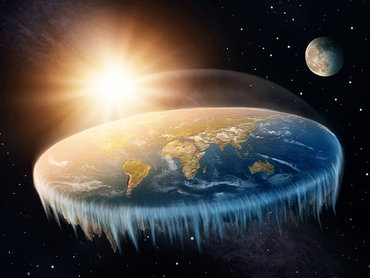Dushan's Website
Thank you for 30 marvellous years
Extra
Beyond Flatness

There is the old story told by Edwin Abbott, a 19th century
Anglican headmaster, in his book Flatland, first published in
1884 and reissued in 1984. The central character is a college
professor named A squared. A2
lived in Flatland. Everything in Flatland had just two
dimensions, height and length. Nothing had depth. If a friend
turned sideways, you couldn’t see him. People lived in flat
houses, ate flat meals, drank flat sodas, thought flat thoughts,
and lived flat lives.
A2 taught higher
mathematics at the university. One night, he threw a party for
some of his friends. Upstairs, his precocious little son,
Pentagon, tried to sleep. As he tossed on his bed, he began to
dream. He dreamed a dream no one had dreamed before, that
everything had not only height and length, but depth. Houses and
trees and especially girls looked so different. He felt
different. Life took on a whole new scope. This new dimension
seemed to change everything.
Then, as unexpectedly as it had started, the dream ended.
Pentagon couldn’t sleep because he couldn’t keep the dream to
himself. Before he knew it, his little bare feet hit the floor
and carried him downstairs right into the middle of his father’s
party. There he stood in his rumpled pajamas pouring out a dream
of an unheard-of dimension. Pentagon tried to explain what depth
looked like and felt like. People didn’t have to go on without
it, he said, living their flat lives and thinking their flat
thoughts.
A2 couldn’t hide
his embarrassment. Nor could he shut Pentagon up. The party
ended in a shambles. Far into the night father tried to reason
with his son. But Pentagon stamped his foot and insisted that
what he had dreamt was really true. The next morning the boy
talked to anybody who would listen, and most thought that he had
lost touch with reality. His willful fantasy agitated him and
completely undid his parents. Eventually, as people did in those
days, they committed him.
Now it was A2 who
couldn’t sleep. In his hours of restlessness he began to wonder:
maybe things can be different. Maybe there was a dimension of
depth. Maybe there ought to be.
Source: Edwin Abbott

The Human Odyssey...
The earliest remains of the Homo
sapiens yet discovered dates back to 300,000 years.
We probably evolved in the
African region,
but then migrated to the rest of the world. Although our
physical appearance changed over time, our race didn't: we
remained human beings.
Remains of the world's
earliest religious worship site
have been discovered in Botswana, where our ancestors performed
advanced rituals, worshipping the python some 70,000 years ago.
So many religions have emerged and disappeared that no religion
can claim superiority over other religions. Religion is only one
of the
means to realize God, but
it is not an end to itself.
The central problem facing our planet is human overpopulation.
Today there are over
8 billion beings on Earth and the
population is still growing. There are too many people and
not enough resources for all of us. Yet,
we are not addressing this
problem responsibly. Do you really think your life will be
better if there are more people of your colour,
caste or creed on
Earth?
Initially used as fire for light, heat, cooking and for safety,
energy has been harnessed by humans for millennia. Today, fossil
fuels have become our main energy sources. This is leading to
climate change and global warming.
The Earth has entered a new era called
anthropocene, which marks
the beginning of the
sixth mass extinction. Many species have already disappeared
from the planet and our own days, as a species, are numbered.
Artificial intelligence has surpassed human intelligence. While
humans think they will be using
AI to win wars against other
nations, AI itself has outwitted human psychology to make us
lose each and every war. Warfare has never been a solution to
human problems...